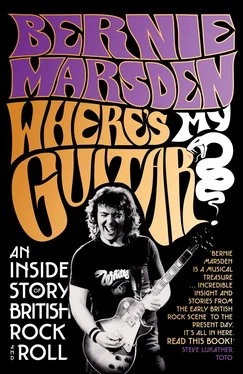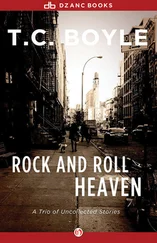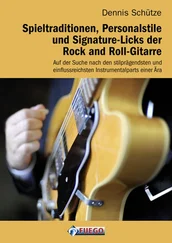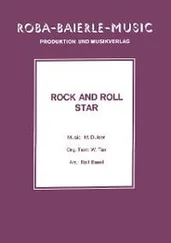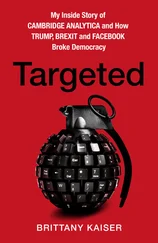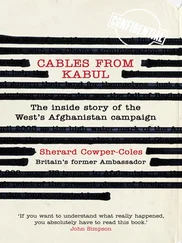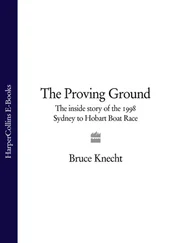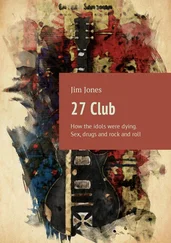I astonished my folks one evening when I was able to play along with the theme tunes from Coronation Street and Dixon of Dock Green . They were both very enthusiastic but I told them that, even though I had improved, the guitar was holding me back. I thought my heavy hint was a bit of a long shot but to my delight they agreed. Thank you, TV theme writers!
I saved every penny from my paper round, and had been saving all my birthday and Christmas money for a couple of years. I had enough money for a deposit! Dad said he would help me out as much as he could. ‘How do we get an electric guitar?’ he said. I knew exactly where. I had been there before.
3.
Look Through Any Window
When I was 13 I spent a few days in at my aunt Doreen’s house in Hampstead, London. I was allowed to make a bus trip on my own after promising I would see the town but not get off the bus.
I boarded the no. 24 from Hampstead to Pimlico, a round trip of about three hours. It remains a great way to see central London. I sat in the prime seat – front, upstairs – and went to Camden Town, Marylebone Road, Gower Street, Trafalgar Square into Whitehall. Sitting there all alone I saw Nelson’s Column, the Houses of Parliament, Big Ben, Westminster Abbey and more, all sights I had only seen in pictures or TV. It was very exciting.
On the return leg I glanced up at 114 Charing Cross Road, the Selmer Music Store – the UK’s sole importer of American guitars. It was a life-changing moment. I had promised not to leave the bus, but what could I do? I had seen Selmer’s window, full of Fender, Gibson, and Epiphone guitars. It was fate. If I had been sitting on the left-hand side of that bus, I would never have noticed. I was down those bus stairs and off the footplate without thinking.
There were bass guitars, amplifiers, and custom-coloured Strats that I’d only ever seen in catalogues. The archtop Gibsons in the store were almost two hundred pounds, an unreal amount of money. One side of the store stocked brass instruments with the famous Selmer badge on them, all very well but of no interest to me, really, the guitars had me totally spellbound. Selmer’s was a magic kingdom. The Beatles had been in this very store, as had the Hollies and the Applejacks.
I spent over two hours in the shop but it took me an hour before I actually plucked up the courage to touch one. The assistants were very nice and I took a Fender Stratocaster down from the wall and dared to ask how much it was. The answer was 140 guineas, the equivalent of around £165. This was an incredible amount of money. That very same model today would be worth £30,000 or more.
It eventually dawned that my aunt and uncle would be wondering where the hell I was as I’d been gone for three hours longer than expected – oops. I apologised, told them where I had been and promised not to do it again.
The next day I was on the twenty-four again, this time getting off at Cambridge Circus. I walked up Charing Cross Road and to my delight I discovered many more guitar shops – Macari’s, Pan Music. I returned to Selmer’s where I heard a famous band were also browsing – could it be John, Paul, or George, or maybe Tony Hicks or Graham Nash? No, it was just the Bachelors, brothers Con and Dec Cluskey buying new Gibson acoustics. The Bachelors were one of my mum’s favourites.
It wasn’t until later visits that I met the Merseybeats, also Chris Curtis, the drummer with the Searchers. I had taken a guitar from the wall, totally out of my price range, of course, and was playing it quietly. Curtis said I was a very good player and invited me to his flat in Chelsea. I accepted his invitation – he was a pop star, after all, and had a chauffeur-driven car. I still don’t believe it, but I got in the car with a man I had just met. With hindsight, that could have been a terrible scenario.
He said that he would cook at the flat. Jon Lord later told me that he was probably elsewhere in the flat at the time – Jon was ten years older than me and was just then starting the project with Chris that would later become Deep Purple. As it turned out, there were only Cornflakes in Chelsea and so that was the meal. I did feel a little strange, eating cereal with Mr Curtis, and wondering why I was there. I should also say that Chris was very nice to me, and nothing whatsoever questionable happened. Maybe he had in mind that I could have been the guitarist for Roundabout, but I was only a young teenager. Jon would later pull my leg about that day, especially at breakfast in a hotel on the road where there were Cornflakes around.
I got to know Denmark Street’s shops well and when my dad asked me where we could get an electric guitar, I was ready. Dad was the guarantor for the hire purchase agreement. Selmer had a special offer on the Colorama 2 by the German company Hofner, whose guitars were very popular, reasonably priced and good quality. It was the one for me. The monthly repayments were quite high, but I really didn’t care: and I had my first electric guitar!
I held the green plastic case tightly as we went home. I thought the guitar was beautiful. It was finished in a cream colour, had twin pickups and a tremolo arm. I took it everywhere – my mum often said that I was chained to it. I couldn’t believe how much easier it was to play than my Spanish acoustic. There was just one more thing …
‘You never said anything about a bloody amplifier!’ said my dad.
I pleaded with him and we acquired a five-watt Dallas amp from Butler’s furniture shop in Buckingham. I practised daily and our next-door neighbour, Tom Tranter, who worked nights, soon had his own name for my setup. He called it ‘That bloody electric thing.’
I quickly improved at the guitar while my grades at school plummeted (although I did get a B-plus for music). The art teacher said in his year report, ‘I have never known such an idle and yet so charming boy.’ I rather liked that.
The first real group I was in was the Jokers: I must have been about 14. They were already an established act with Eric Jeffs on bass, Stan Church on drums, Dave Brock (not the future Hawkwind leader!) as the vocalist and second guitarist, and Steve Rooney the lead guitarist. Eric played bass guitar left-handed, à la McCartney – but strung normally and played upside down.
In the practice room at the youth club I immediately realised the underpowered Dallas was useless in this company. I knew I needed a bigger amp but I didn’t have any money, and asking Dad was out of the question. Guitarist Steve owned a six-input amplifier with a massive thirty watts of power which I used via Dave. Steve found me – a young upstart – playing all the guitar licks he knew plus quite a few that he didn’t and, worse still, playing them through his massive amp. Having both of us in the band was never going to work. The upstart 14-year-old was already shining brighter than Steve and he left the band – and took the big amp with him. Dave Brock had a lovely, blue Watkins Dominator amp which he lent me. I wish I still had it, a very collectable amplifier.
Steve later told me he left the band because he wanted to spend more time with his girlfriend. I was amazed. Even at 14, I couldn’t understand why anybody would want to spend time with a girl instead of being the guitarist in the Jokers.
I was very keen, practising all the time, learning Chuck Berry riffs and Bo Diddley songs, and I settled in very quickly. We had a major upset when drummer Stan Church left after a member of his family was jailed for the manslaughter of a local girl. The case even made national TV. I was very young and quite frankly confused. I didn’t understand why this had to have such an impact on my band – was having the name Church the reason?
Roger Hollis replaced Stan as our drummer. He lived near me in Overn Avenue, and was an early heavy metal drummer: he really did hit them hard. We practised every Tuesday and Thursday evening, when the sound of the judo lessons in the upper room was louder than the band. Amps were soon to become a lot louder – thank you, Jim Marshall.
Читать дальше
